-
Posts
858 -
Joined
-
Last visited
Content Type
Profiles
Forums
Gallery
Events
Posts posted by aydingocer
-
-
Wonderful!
I was in Venice 2 months ago. Perhaps you like to see this....a Riva water taxi.
Cheers,
Robin
Wow, looks great! Maybe I will pay a tribute visit to Venice after I have completed

- WackoWolf, mtaylor, Robin Lous and 1 other
-
 4
4
-
BUILD DAY 24.
Back from vacation and today I had some 2 hours to spend on my Riva. I finished the remaining 2nd plankings on the body.
Next I will continue with deck's 2nd planking.
Here is also a teaser for your eyes, to be used on my seats. As I told earlier the seats which come with the new version is plastic (as opposed to the earlier editions which were apparently fabric covered). I have been looking around how to make them look better. As a try I bought a few (A4 size) faux leather sheets and asked a local tailor to make the stitches for me (by local I mean a tailor in my parents' neighbourhood in Turkey). He did an excellent job with making fake stitches. The stitches are 6mm apart from each other and about 1mm in length.
I have no exact plan yet on how to implement them to the seats. I still have a lot of tasks to do before it comes to that. Here is how it looks:
2 hours today.
85 hours into build in total. -
-
-
Thanks for comments, Brian and Per.
I have investigated several build logs in the radio control kit forums and epoxy resin + fibreglass seemed to be working fine, as you guys mentioned, if done properly. I will work on a few samples before I hit the first brush stroke on my Riva, sure.
-
DOES ANY ONE HAE PICTURES OF USING THIS FOR BOF AND OR POB, WOULD LIKE TO SEE HOW IT WORKS AN WHAT PIECES NEED TO BE REMOVED TO SLIDE IT FROMM FRAME TO FRAME, ANY HELP WILL BE APPRECAITED. THANKS Don
Hi Don,
I have used my build slip mainly for gluing the bulkheads and then mostly as a stand after that for planking. During planking I used a pillow which was making it easier for me (as I often intend to take the hull to my lap for close work).
Buy anyway here are a few photos.
On the first picture below you will see the screw holes at every 10cm intervals, on both sides of the base board. You also see the "panel" which is standing vertically. There are 2 "rails" on either side behind this panel. These rails are fixed to the panel (in other words, the white vertical panel and the two rails slide together on the base board). The rails have screws, which can be tightened/loosened using washers. While the screws are in the same hole the rails will allow the panel to move around 10cm back and forth. So,
- as you will work with the next frame, you move the panel accordingly.
- when the rails do not allow moving any further with the screws in the same hole, then you remove the screws, move the panel to the next location and put the screws to the next pair of holes.
Second photo below shows how you use the measurements on the panels for reference:
You can catch a few more photos in the early pages of my Riva Aquarama build log where the build slip is in action:
Br;
Aydin
-
Adydin,
Save the sanding dust from the second planking. Then mix water and white glue together in a 50/50 mix or so it has the consistency of milk. Add sawdust to make a paste (more like a slurry than a paste though) and put it in the gaps. Let it cure and then re-sand. You might have to do this a couple of times. Do it before putting the epoxy on the planks for sealing.
Thanks a lot Mark! I think the diluting of the white glue with water is what was missing in my formula.
-
BUILD DAY 21-22.
8 hours in two days.
79 hours into build in total.Continuing with the second planking in these two days. No big surprises so far. The wood is extremely good quality which helps a lot.Here are some details:I have been using these special screws on some occasions where I tape or rubber band was not very helpful. These are the screws which I had mentioned in an earlier post, bought from Micro Mark web shop:This is the status at the end of the day. You will notice some impurities here and there, some of which I filled with self-made paste by mixing wood glue and mahogany dust (collected by filing a scrap mahogany strip). So far I have filled some of the gaps below the waterline which will be painted in white, therefore the color difference is not a problem. If it works colorwise fine as well, then I will use it in other parts.The bow will covered as well, using photo etched brass, therefore the color difference will not matter there either.By the way; if any of you experienced fellow members have any suggestion for how to fill the gaps seamlessly, I would be more than happy to hear.Thanks for watching. -
That's the outside, I take it you have very little maneuverability on the inside, which was what I meant for the epoxy resin. Just coat the inside by rollin' it arround. If you get water inside, you'll have a problem too, so you can't rely on outside only, as it doesn't always come through the outside. However, that tutorial is good, thank you
Ah, yes, you mean the inside. For that I have in mind to use epoxy based sealer, such as Hempel 599, which is used in yachts.
-
-
-
- MarisStella.hr, gjdale, Red and 5 others
-
 8
8
-
-
Let the 2nd planing begin!
Planking material: 1,5mm x 8mm mahogany (as opposed to 1,5mm x 7mm lime used in first planking). This is interesting as I would normally expect the 2nd planking strips to be thinner. These ones are as thick as the lime planks underneath.
2nd planking follows pretty much the same sequence as the first planking. Start with 1 strip from the center of the each side of the hull, then switch to the middle of the bottom, then continue in alternating turns.
-
BUILD DAY 20. 2nd PLANKING COMMENCES.
Today I spent some 1-2 hours for sanding, after which I concluded that the surface is smooth enough for 2nd planking. My tools were Proxxon orbital sander with 180 grit paper and a sanding drum, same grit paper, self-made sanding drum from a pool toy (water gun). The latter has been a perfect tool with its soft cushion especially on the curvy surfaces:
The hull is now ready for 2nd planking:
-
-
Back to work. Before sanding I decided to use some scraper in order to get rid of the glue residues and to level the stripes for helping the sanding process. I have this set of scrapers with different contours quite useful for this boat, which has rather curvy surface:
They work quite effectively indeed:
-
-
-
BUILD DAY 19. COMPLETING 1st PLANKING.
 No, I am not one of those who have been hypnotised by Pokemon Go, which became available in Finland as of yesterday!
No, I am not one of those who have been hypnotised by Pokemon Go, which became available in Finland as of yesterday! 
I have had roughly 4 hours today to finally complete 1st planking and start preparing the hull for the second planking.
First, finishing the first planking of the removable engine cover (1st planking of this section is made by veneer sheets). After the planks are glued, the section should fit in its space nicely. Some parts in the stern prevented it. I had to use a rasp at the stern to get rid of those obstacles. Here are a few details:
Positioning of planks (parts 175, 76, 177) require some attention. The first photo below is a demonstration of wrong positioning, even though it looks tempting:
This is the right way:
If you look carefully at where the middle part sits, you will notice that I glued thin strips, which will raise the middle piece about a millimetre or so. Without them, the middle piece was touching the stern. so that was the reason.
The middle part in place, all glued:
Lid in place:
-
-
-
-
Glued the thick curvy mahogany frame which I had filed ready yesterday. They are now covering around the stern.
Apparently stern planking should be done in such a way that the 1st planking (which I am doing now using 1,5x7mm lime as the previous plankings) shall be level with the veneer parts on the bottom ( i.e. parts 172 and 173), while leaving some offset with the mahogany frames, so that they will be level with the 2nd planking (which will be done using 1,5x8mm mahogany strips). So I glue them around 1,5mm offset (see the photo):



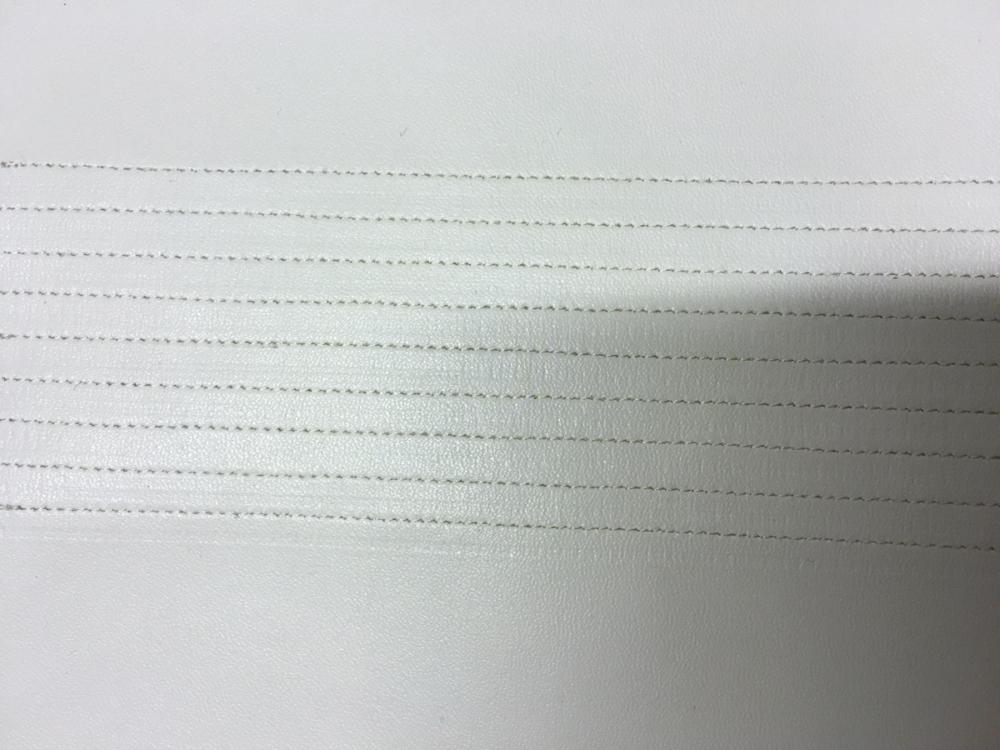
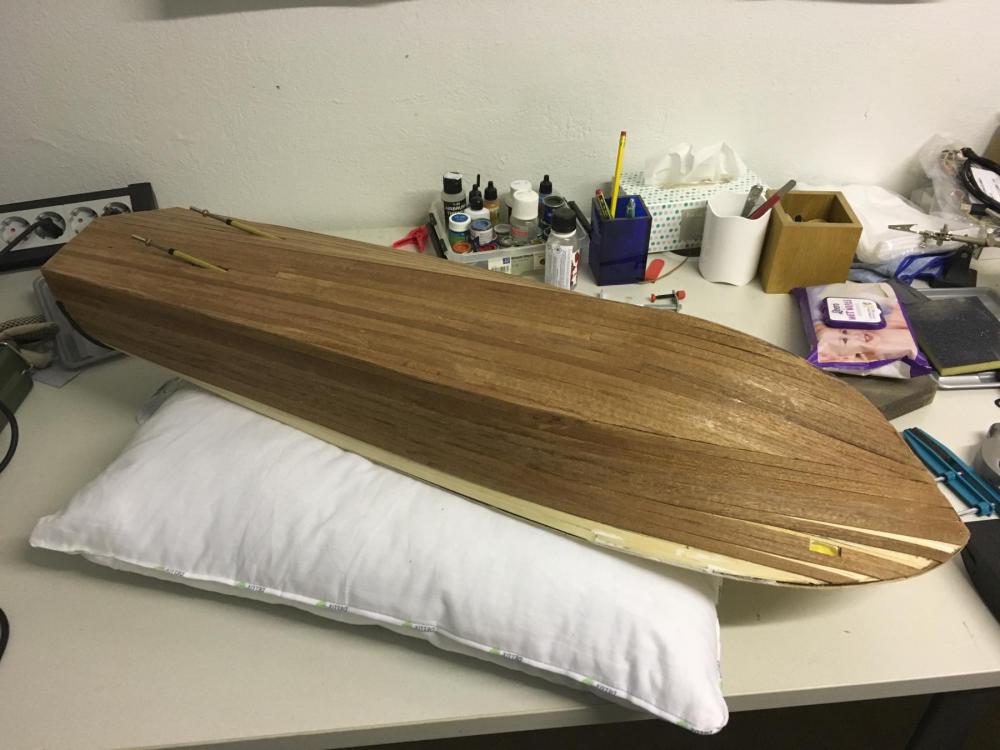

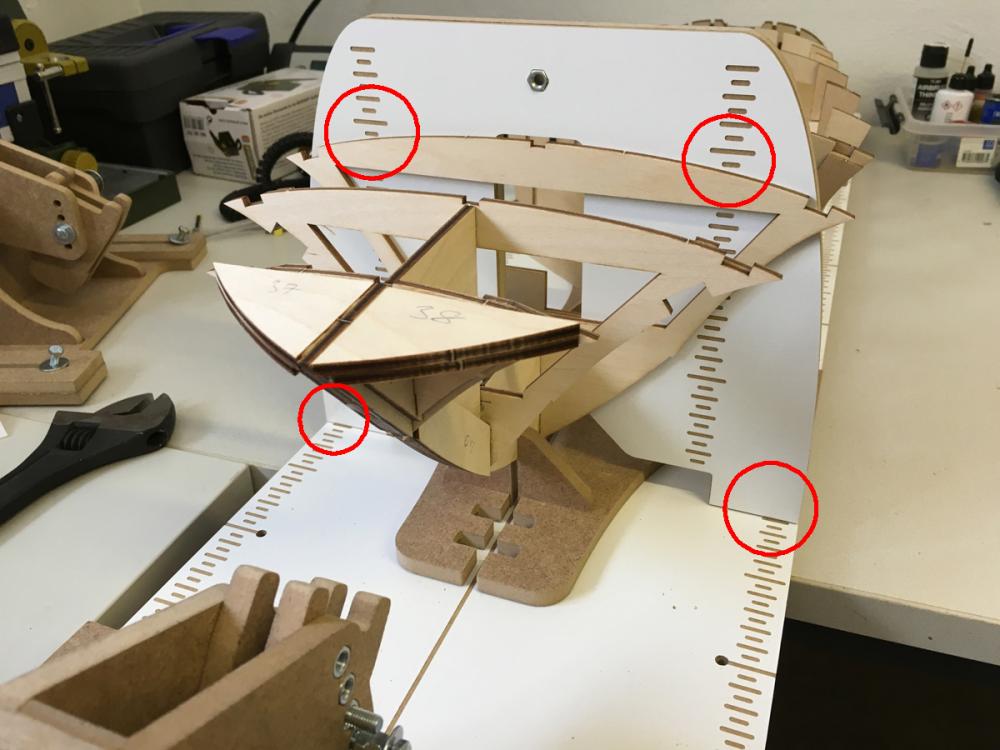
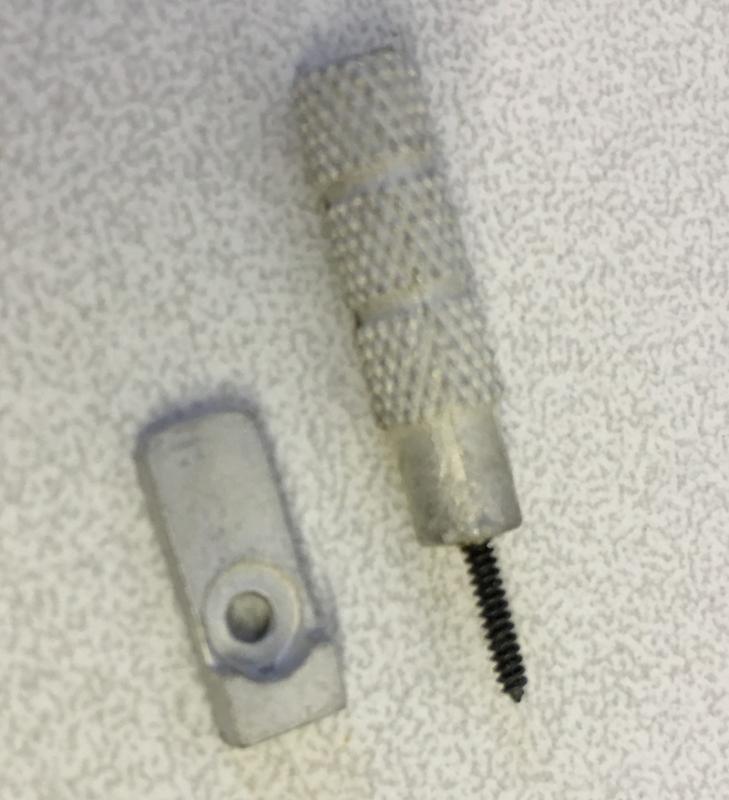
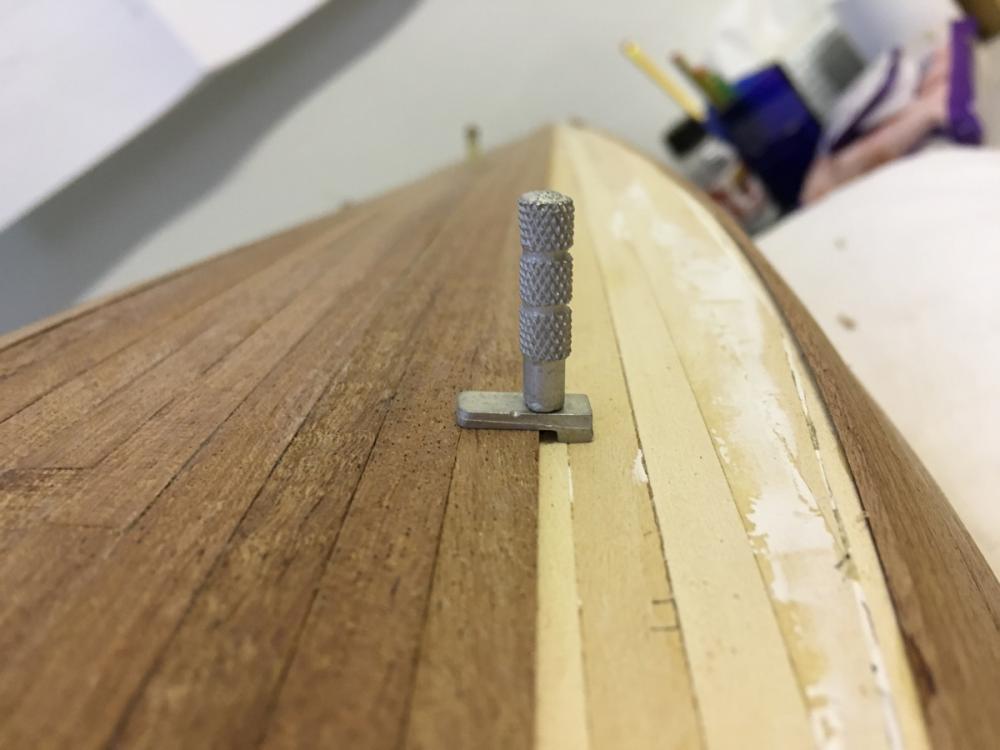
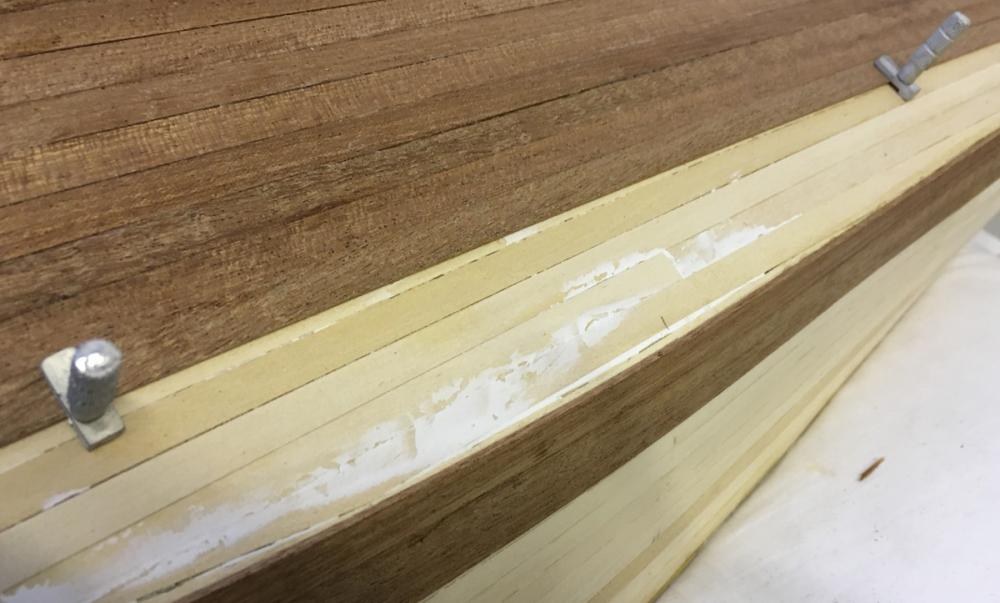
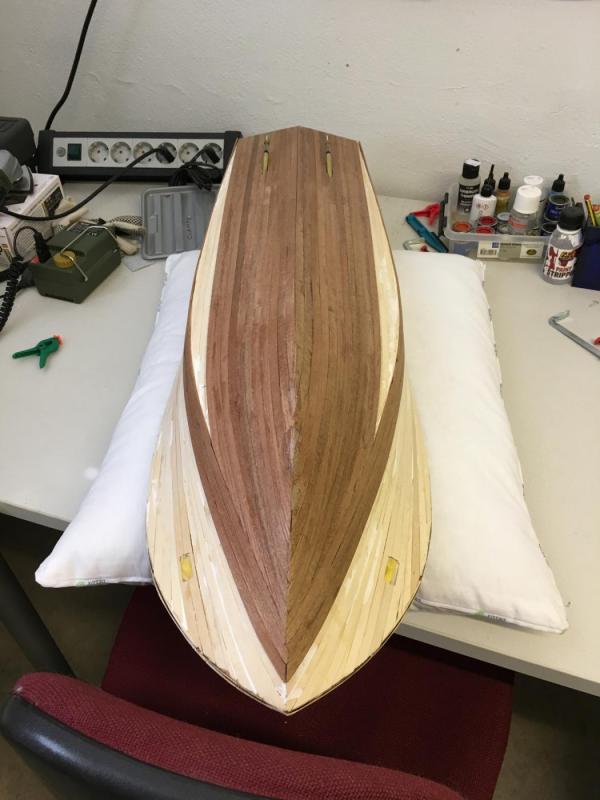
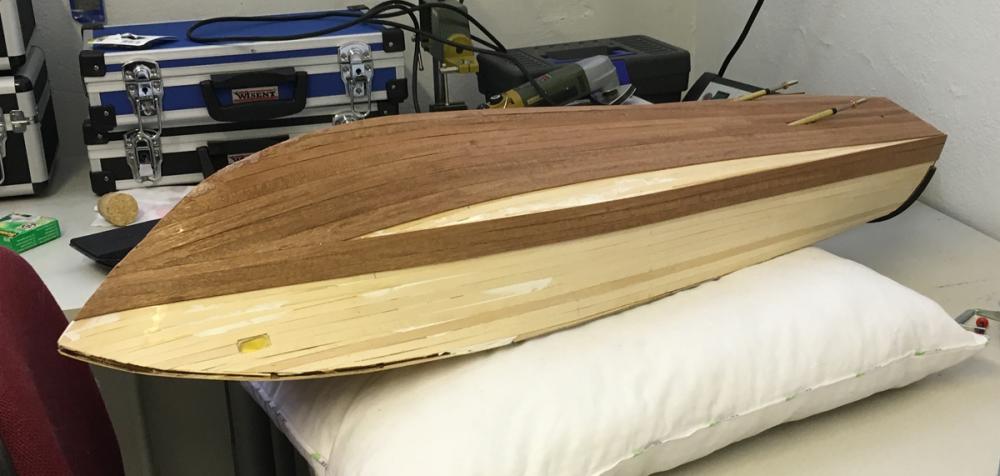
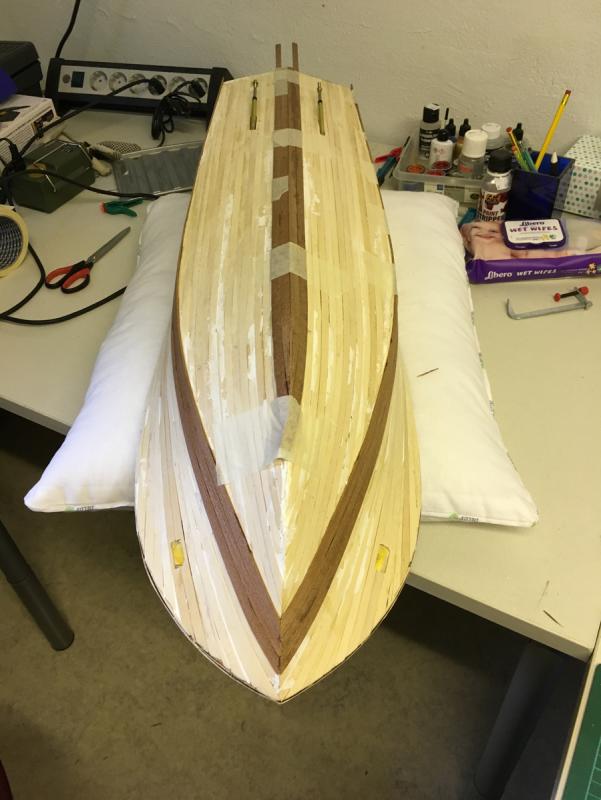

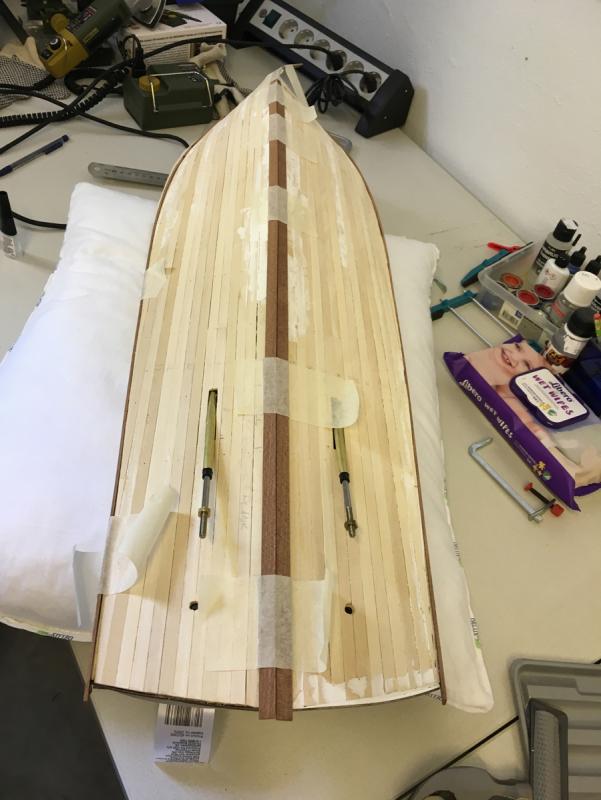
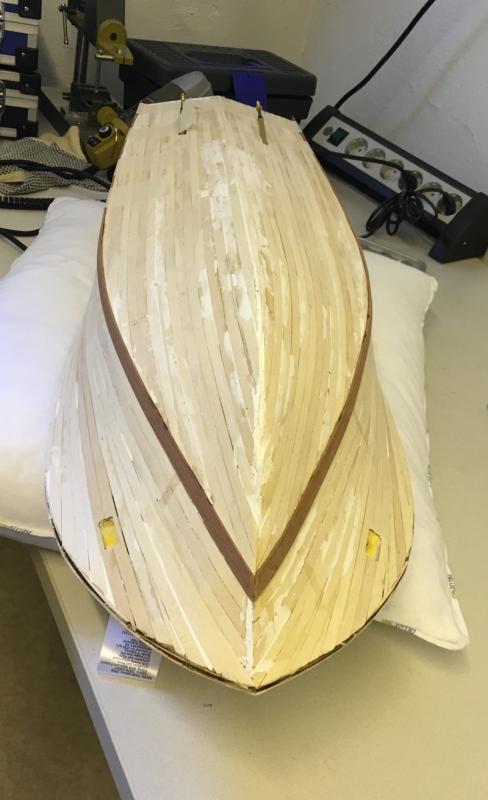
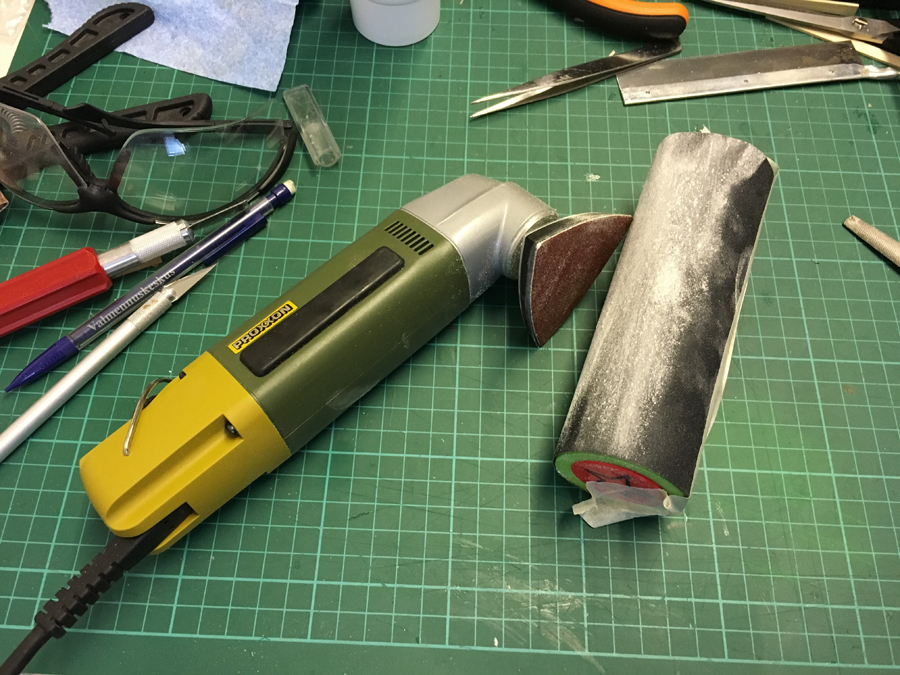
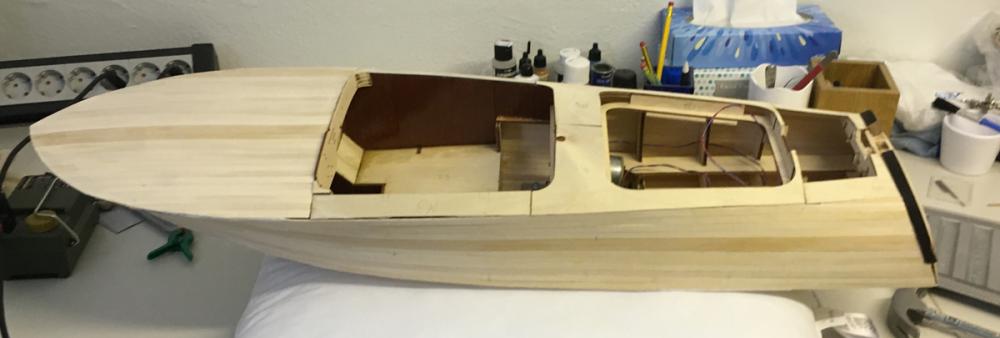
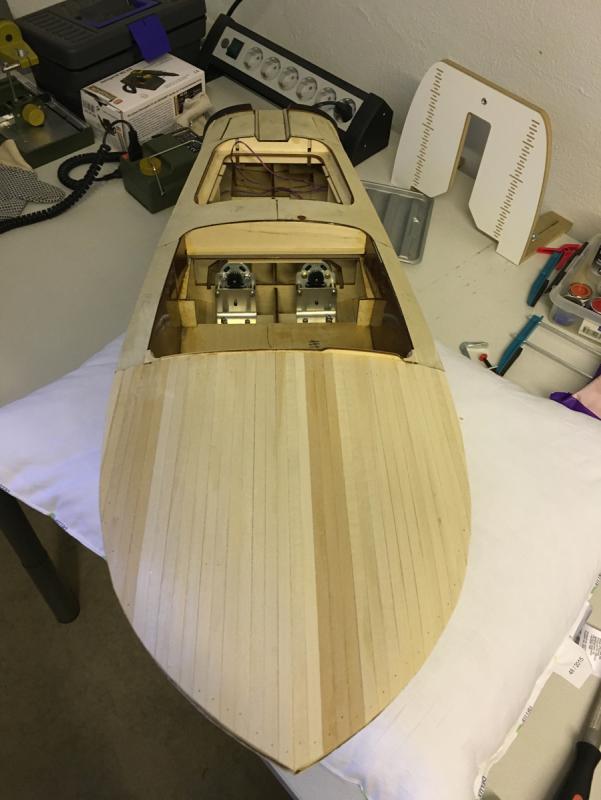
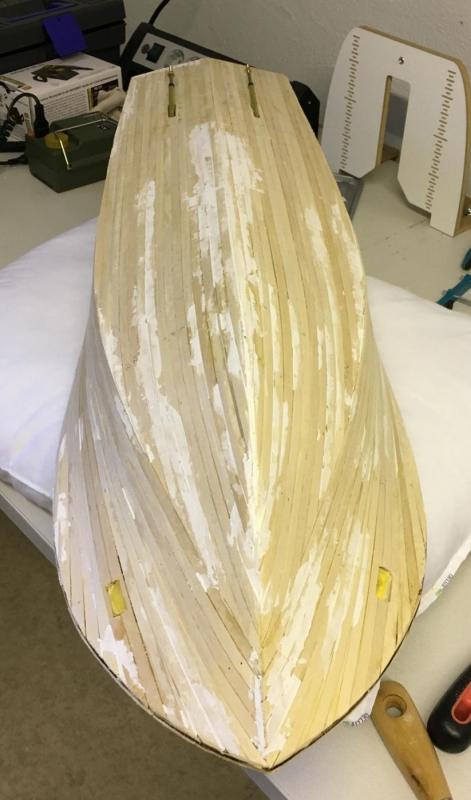
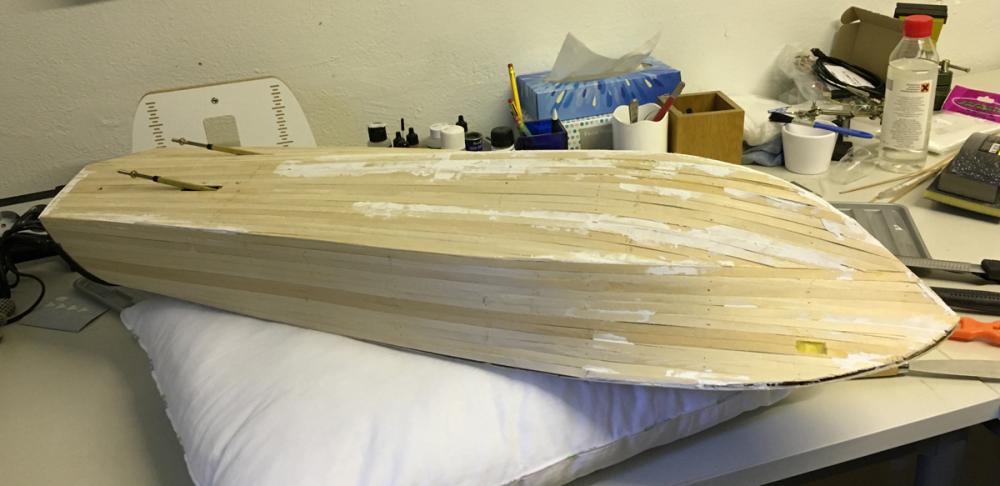
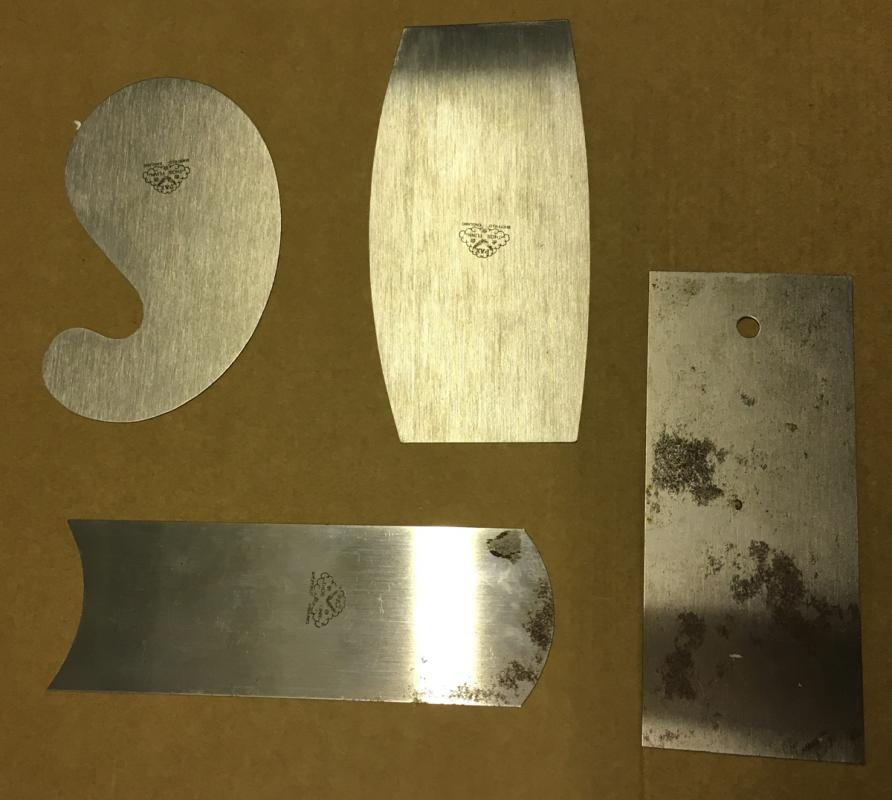
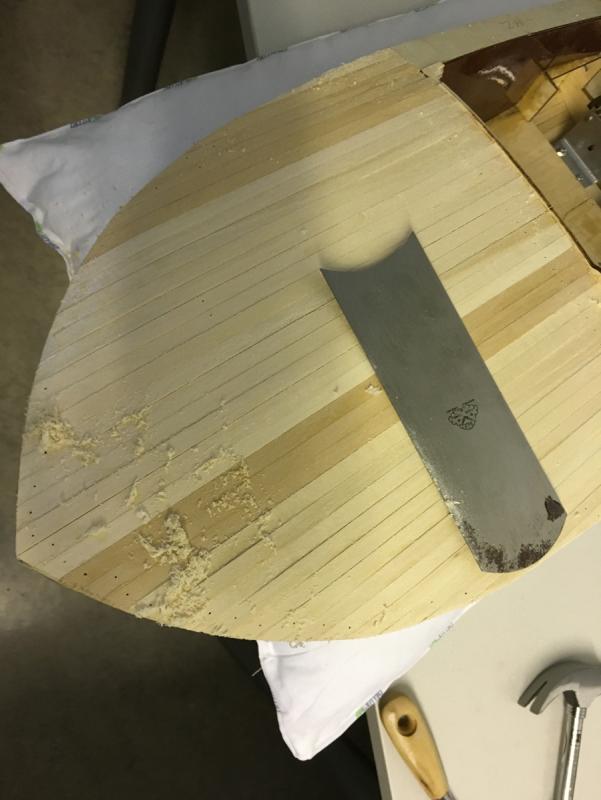
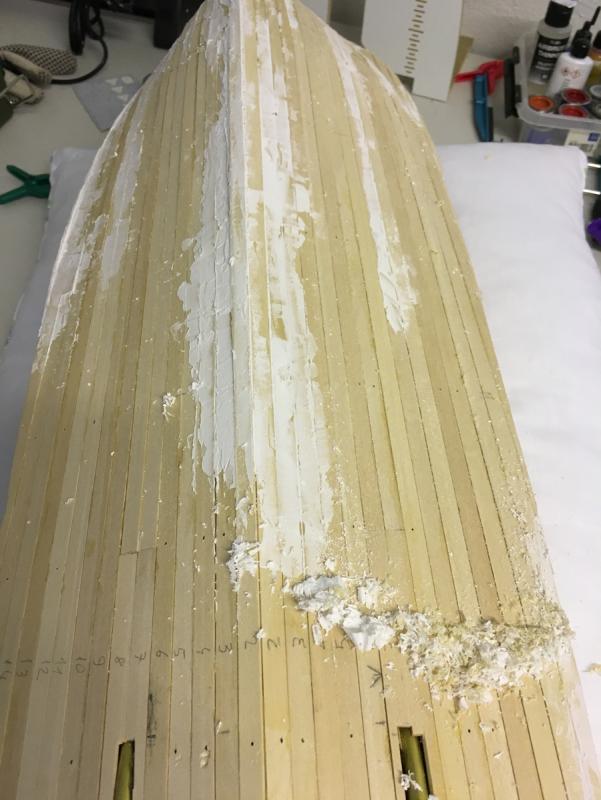
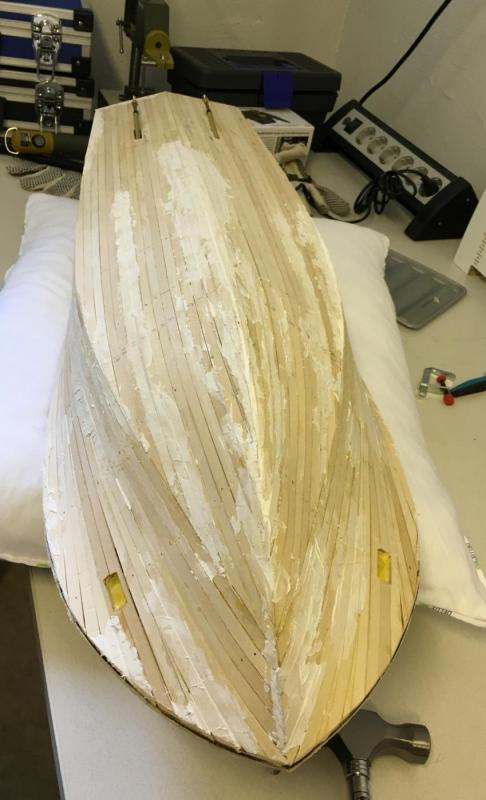
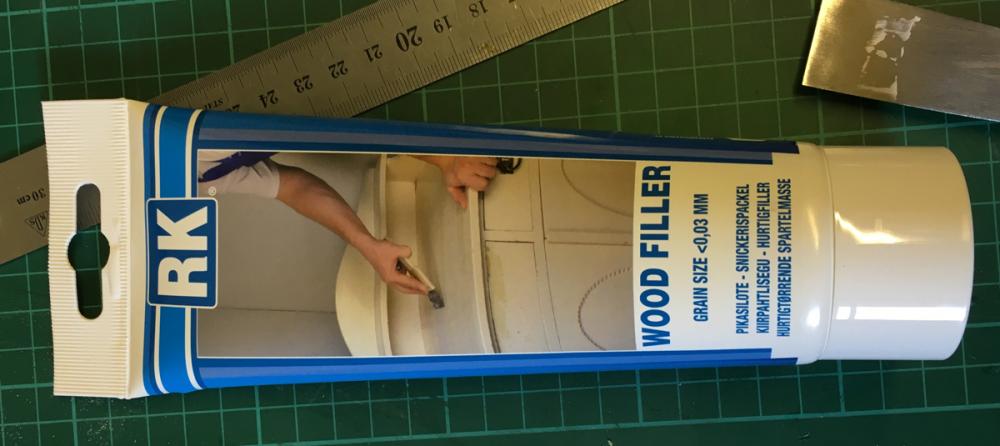
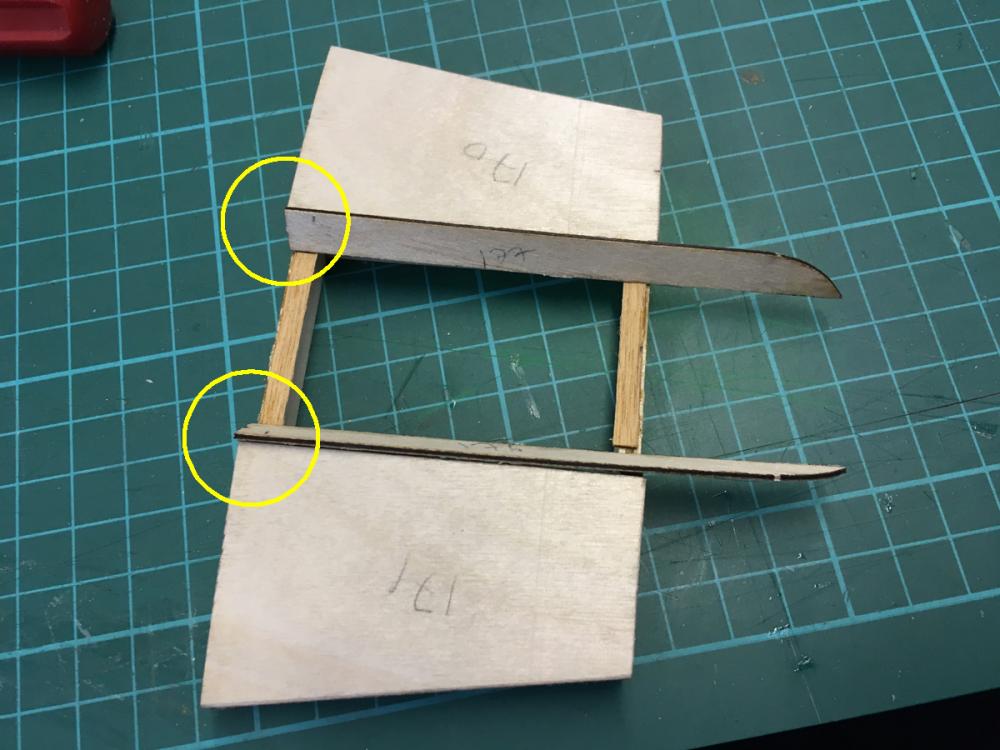
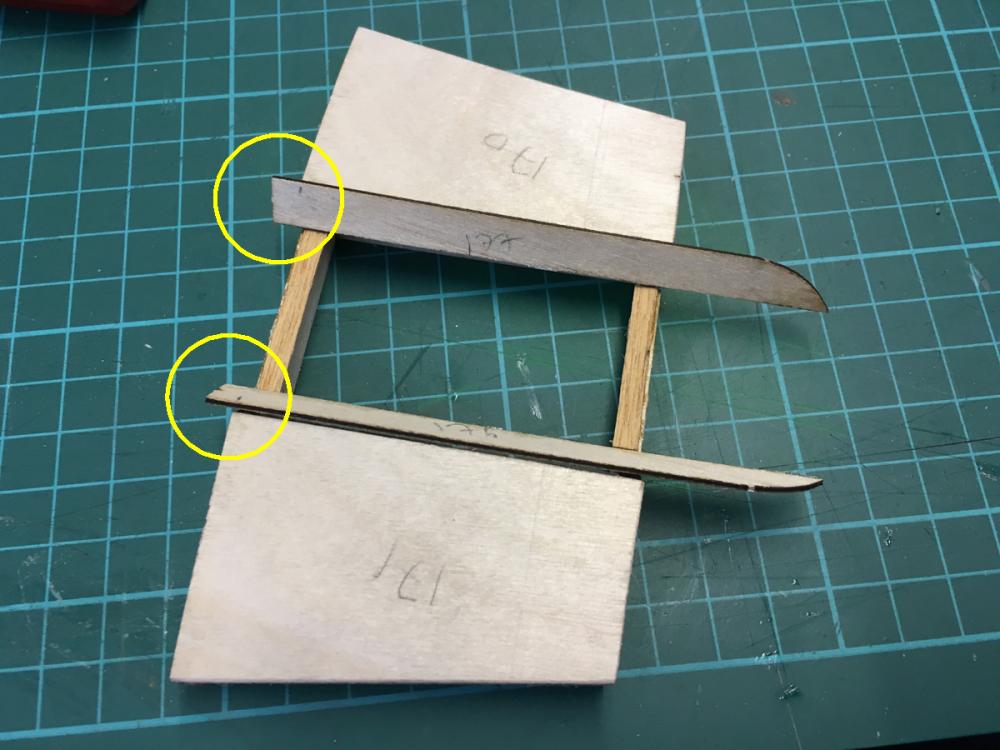
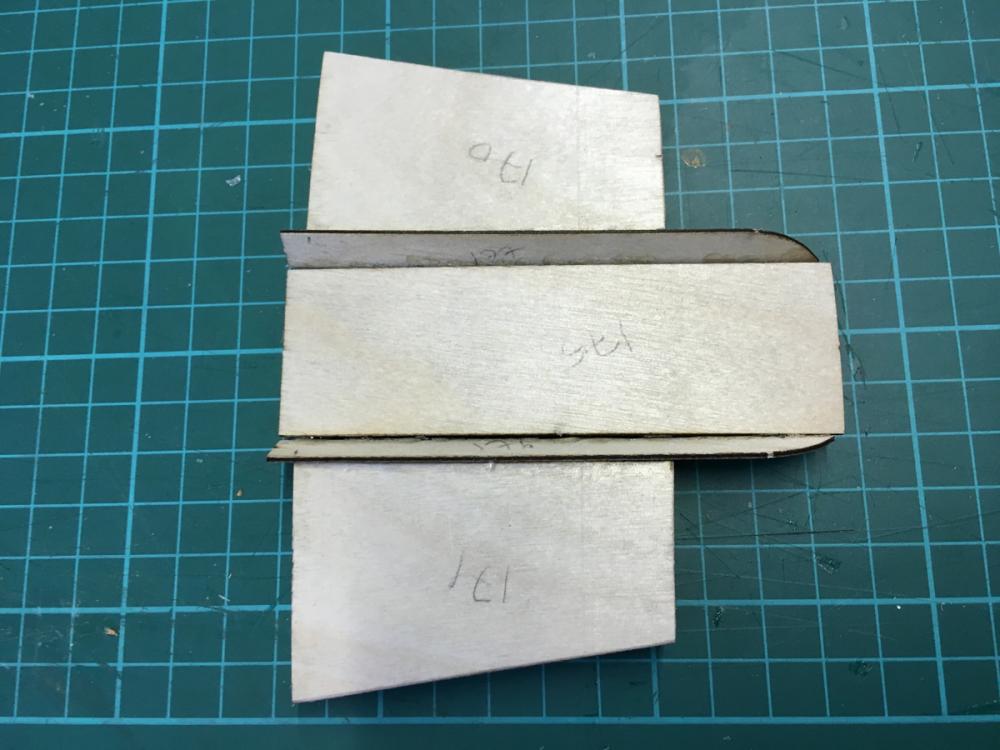
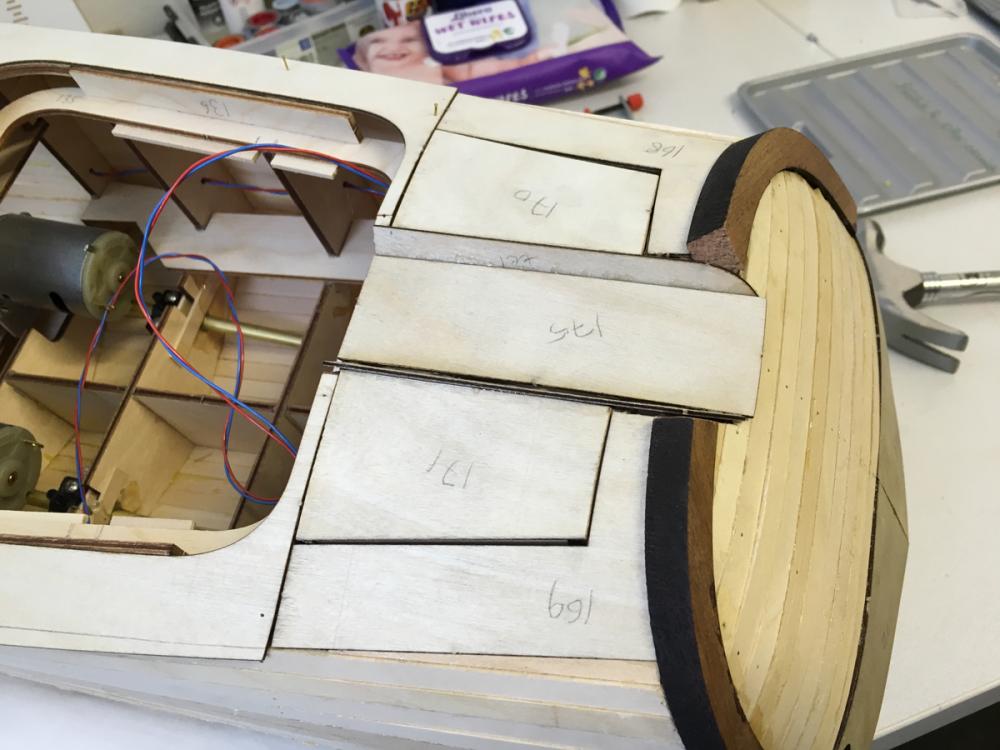
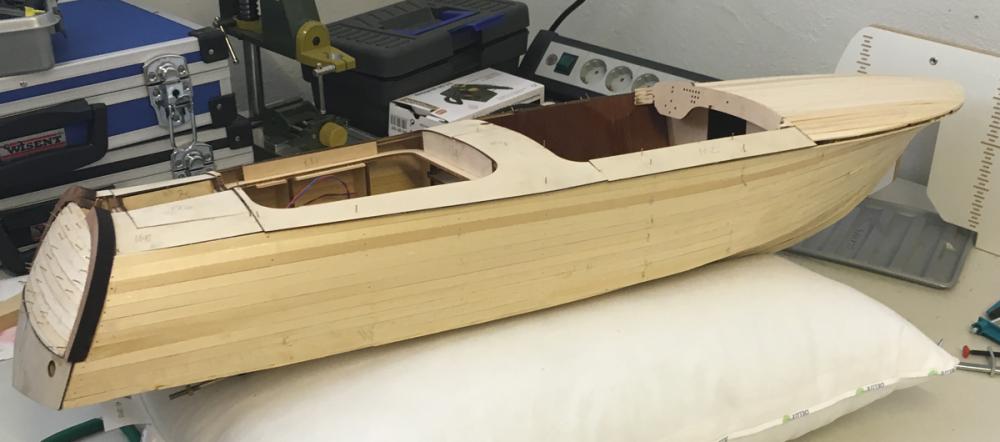
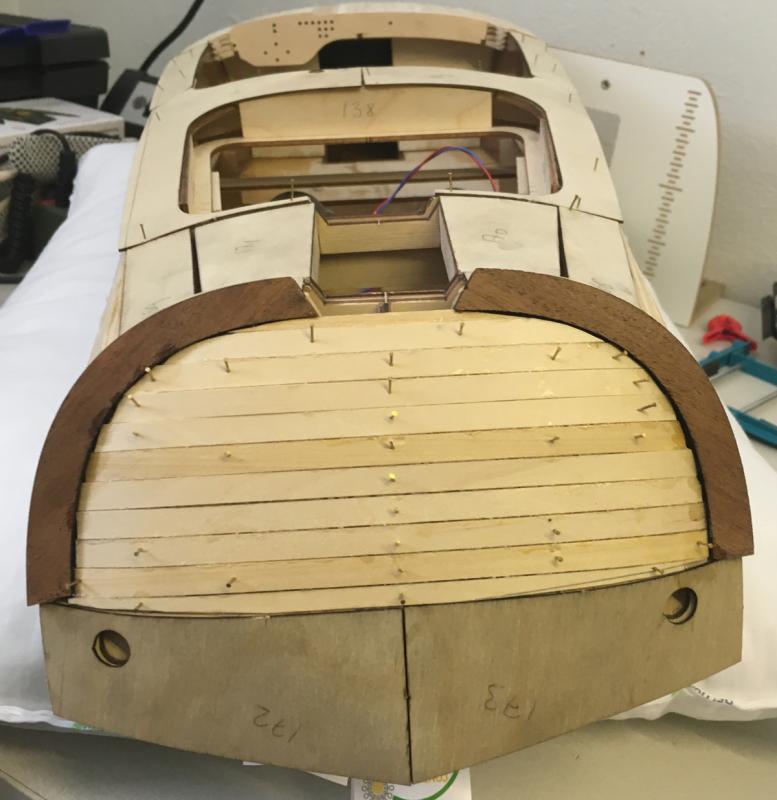

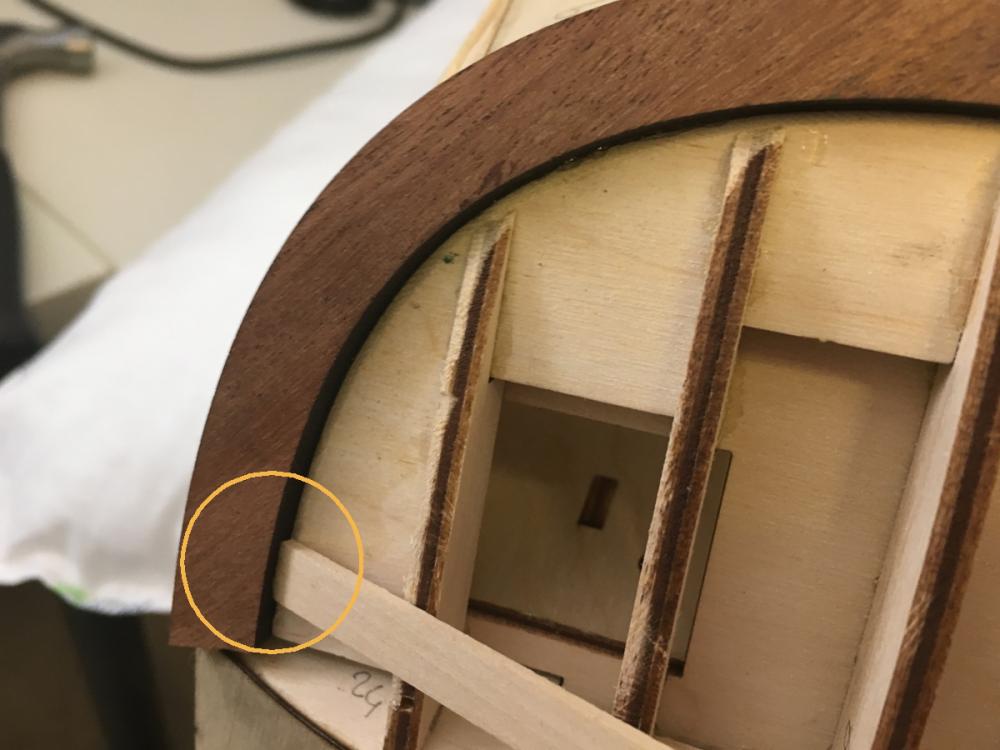
Riva Aquarama by aydingocer - FINISHED - Amati - RADIO - A new challenge for a so-far static ship builder
in - Kit build logs for subjects built from 1901 - Present Day
Posted
Hi Carl,
The "stitch lines" on the seats are 6mm apart from each other (see photos). 1st photo, as I posted earlier, belongs to the earlier version of the kit, where the seats are actually stitched. The second photo is what the contemporary kit (i.e. mine) contains as seats.
The seats that come with previous versions of the kit (photo credits hobbiesguinea.com):
Seats in my kit:
The stitch sizes (i.e. around 1mm) was the smallest size possible on faux leather using a special nail (we actually went to a tailor's supply shop together with the tailor to buy that sawing machine nail, can you believe ). I think it has even better looks-to-scale than the older seats in the first photo.
). I think it has even better looks-to-scale than the older seats in the first photo.